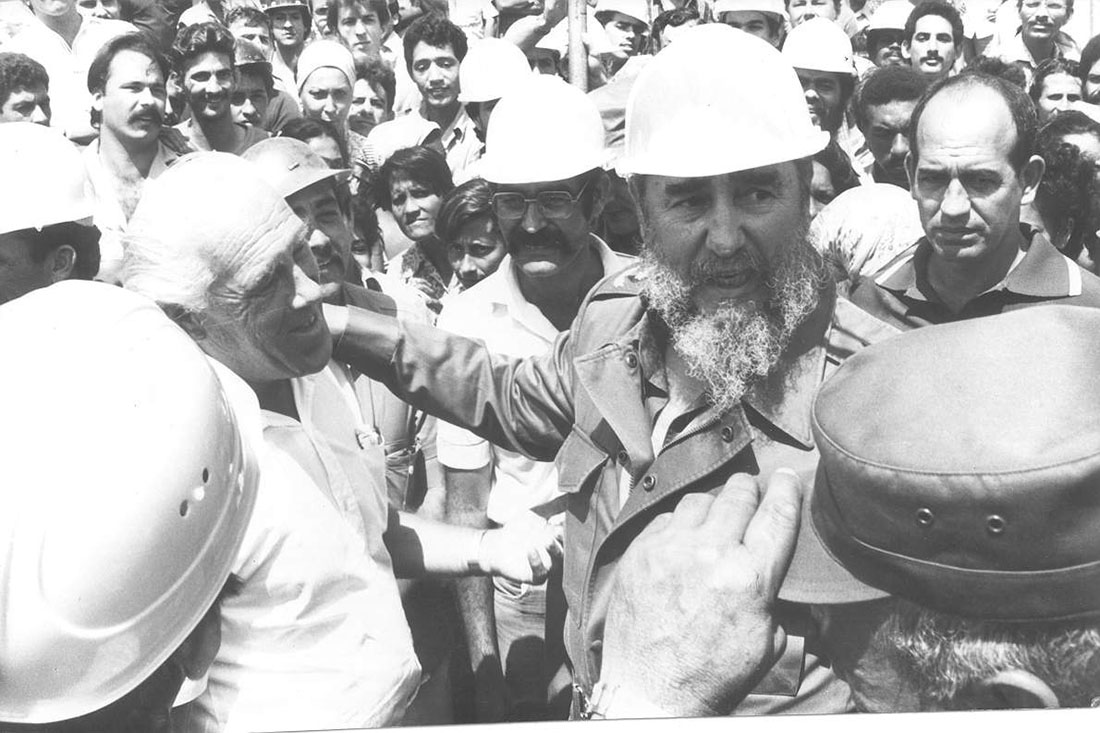Starting from Guaimaro… Cuba Libre!
On April 11th, 1869, the former Marquis of Santa Lucía, Salvador Cisneros Betancourt, was elected as president of the House of Representatives, a designation that was equivalent to the most important position in the Republic; therefore, to deal with the creation of new laws and decrees; in the legal, political, administrative and military structuring and organization of the State in Arms, by the way, this last branch that would win him not a few personal conflicts, and for the course of the war up to Zanjón.
The following day, the General in Chief of the Liberation Army was sworn in, a position that fell to Manuel de Quesada Loynaz, brother-in-law of Céspedes from Camagüey. Ana Betancourt Agramonte attended that open session of the assembly in the company of her husband Ignacio Mora de la Pera.
On the other hand, no black or mestizo occupied a chair, despite the fact that many were already part of the forces that guarded the town. Immediately afterwards, Carlos Manuel de Céspedes assumed the first magistracy and began his speech with the following words: “Compatriots: The institution of a free government in Cuba based on democratic principles, was the most fervent vote of my heart (…) . I am not unaware of the grave responsibility that I have assumed by accepting the presidency of the Republic (…). Cubans: With your heroism I count to consummate independence. With your virtue to consolidate the Republic».
Fidel in the Camagüey of Agramonte
The Revolution had triumphed on January 1st, 1959. The “mambises” finally entered Santiago de Cuba. From the end of the Island, the Caravan of Freedom with Commander in Chief Fidel Castro Ruz and his “olive-green mambises” entered Guaimaro, rebuilt from that fire that one day its inhabitants preferred to reduce to ashes rather than see it lose its honor by the Spanish troops of Valmaseda.
Sibanicú, Cascorro and other rural towns overflowed the central highway to give cheers to the Revolution and its Commander, and to shake hands with Fidel, Celia… On January 4th, the Caravan at the Casino Campestre. At night, Fidel Castro in the Caridad Square to speak to the people of Camagüey. He would return to Camagüey in successive moments, when the intense work at the head of the country allowed him. Everything would be more difficult, as he predicted when he entered Havana, that January 8th.
Almost four months after the triumph, on April 12th, 1959, in the C. J. Finlay Park, the Commander in Chief would preside over the closing act of the Camagüeyan Campesino Congress; then he would travel to inaugurate the first rice cooperative that would bear the name of Mayor Ignacio Agramonte; and from there to the rice farm “La Olivia” in the Florida municipality.
Of course, he would return to the province wearing the guerrilla uniform, while he was accompanied by the President of the Republic, Dr. Osvaldo Dorticós Torrado, his Council of Ministers and other members of the historic National Directorate of the United Party of the Socialist Revolution integrated into the Communist Party of Cuba. .
It was not a routine walk, but a productive impulse in the middle of the “Girón Week”, on April 12th, 1965. The fight was with the sharp mocha in the cane cuts on the land of the Noel Fernández sugar mill, former Senado. Then, on April 5th, 1966, he would once again enter mocha in hand to the canes of the Vertientes sugar mill, later Panama.
Another April 12th, in 1978, the Commander in Chief, accompanied by the authorities of the Camagüey province, began an extensive tour. Inquiring about the progress of the development of Camagüey, he visited works of the Northern Circuit, among others, the Thermoelectric “10 de Octubre” and the Sugar Transportation Port in Tarafa in Nuevitas.
In the city of Camagüey, he traveled along the North Beltway to take a look at the Meat and Dairy Processing Plant under construction. A day later, he went to inquire about the construction of the “Batalla de Las Guásimas” power plant, in Vertientes.
Fidel wanted to check the progress of the industrialization process of the territory of Camagüey, the base of the prosperous socialist nation, which President Carlos Manuel de Céspedes and the Mártires de la Patria could not enjoy.
Translated by: Aileen Álvarez García







